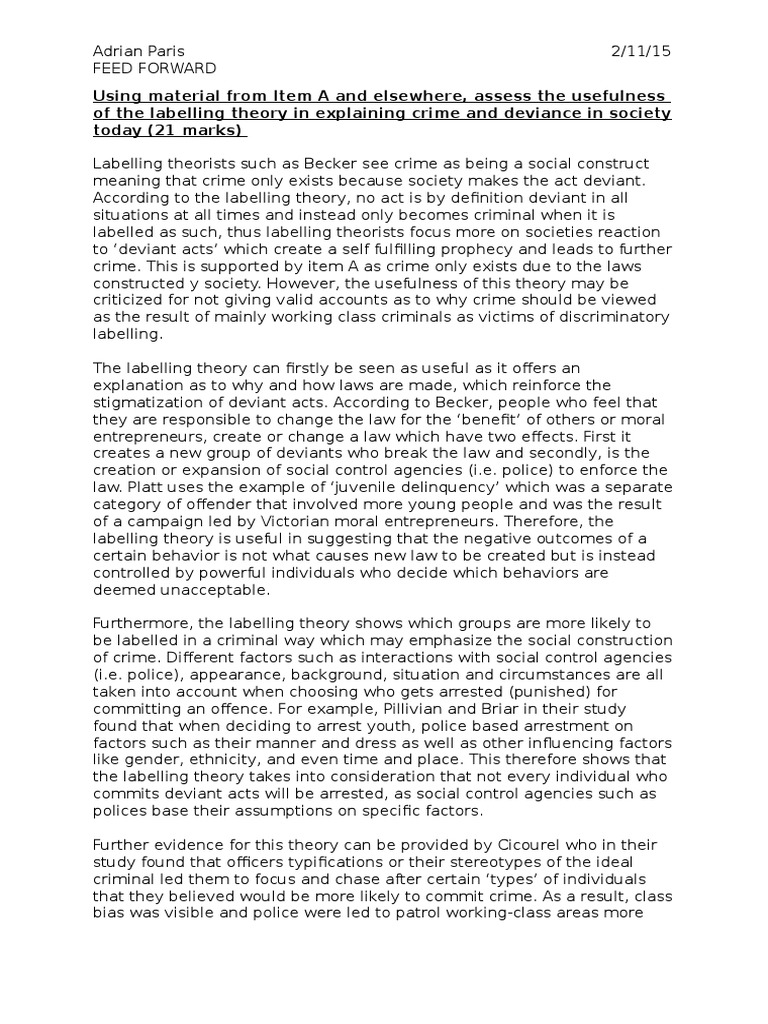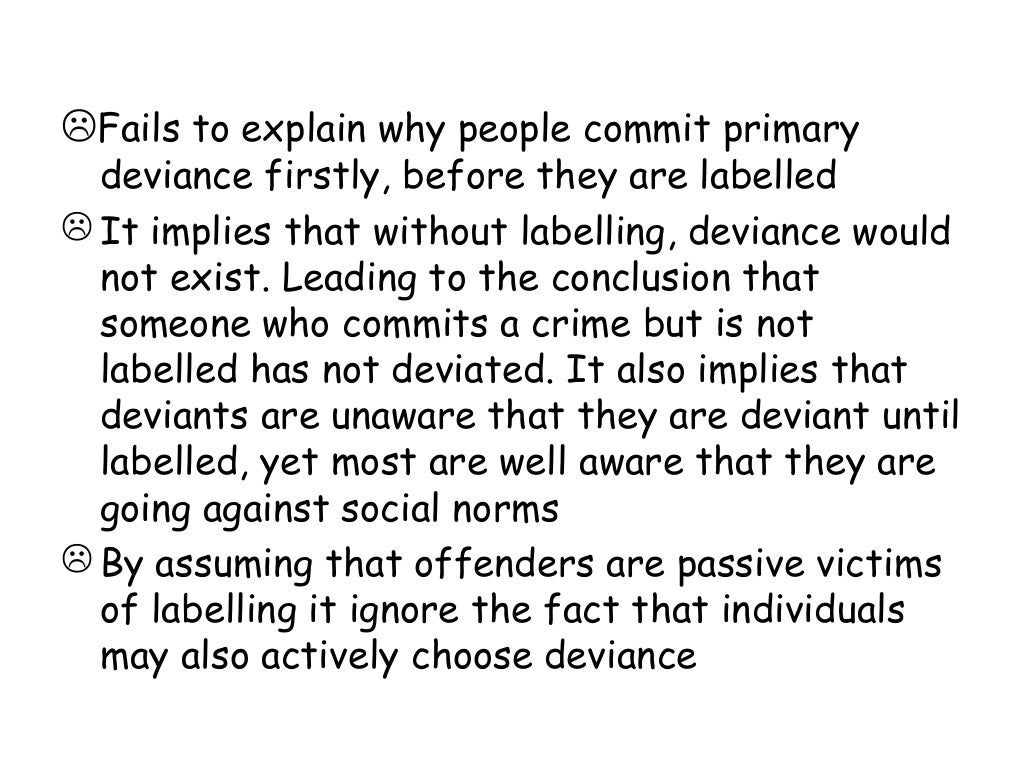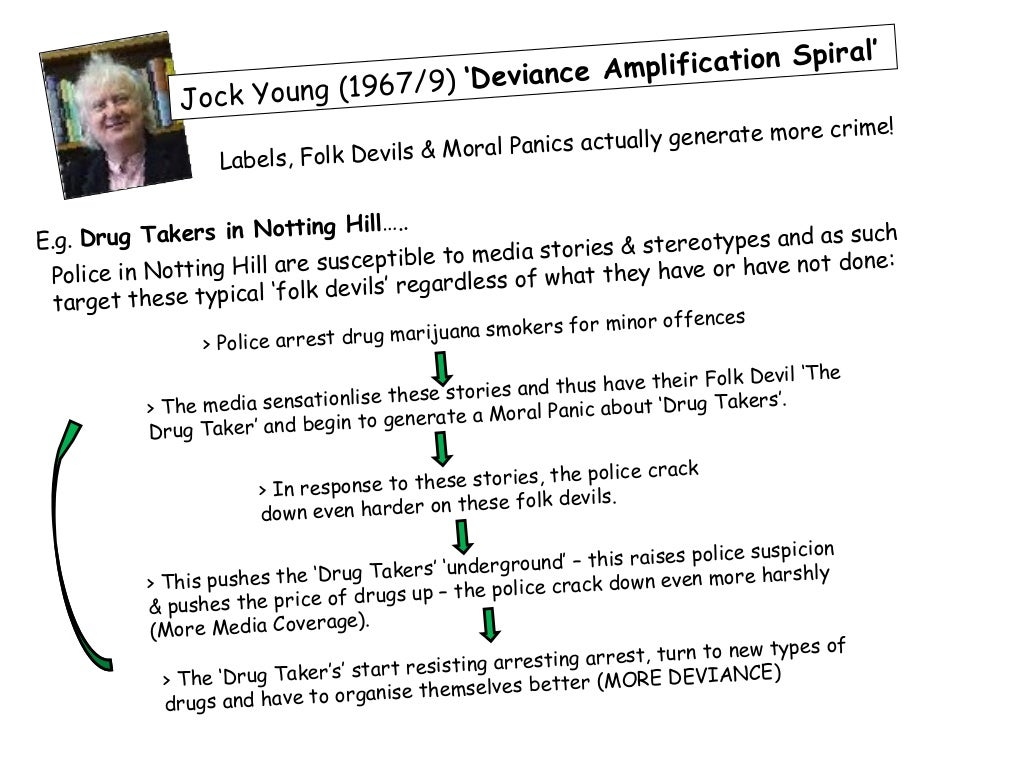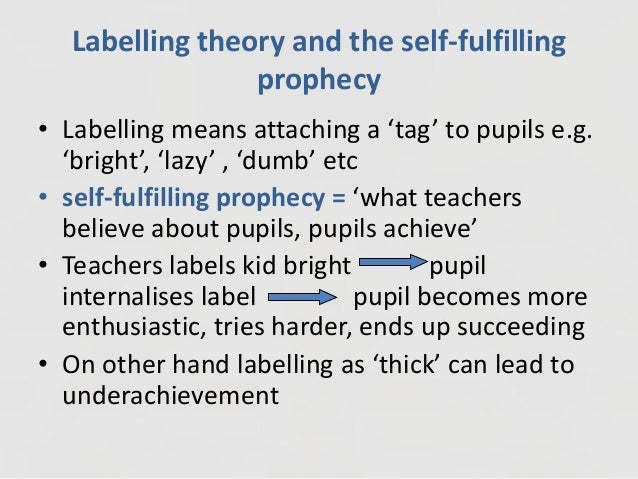Are you having trouble finding 'outline labelling theory'? Here you can find the questions and answers on the subject.
AN Overview of Labeling Theory The Origins of Labeling Possibility. The idea of labeling theory flourished in American sociology during the 1960s, thanks in...Labeling and Deviance. Labeling possibility is one of the most authoritative approaches to perceptive deviant and criminal...Inequality and Stigma. Research shows that schools discipline Black children more frequently and...
Table of contents
- Outline labelling theory in 2021
- Labeling theory pros and cons
- Labeling theory criminology definition
- Labelling theory in psychology
- What are the principles of labelling theory?
- What is the labelling theory
- Labeling theory pdf
- Labelling theory pdf
Outline labelling theory in 2021
 This picture shows outline labelling theory.
This picture shows outline labelling theory.
Labeling theory pros and cons
 This picture illustrates Labeling theory pros and cons.
This picture illustrates Labeling theory pros and cons.
Labeling theory criminology definition
 This picture demonstrates Labeling theory criminology definition.
This picture demonstrates Labeling theory criminology definition.
Labelling theory in psychology
 This picture illustrates Labelling theory in psychology.
This picture illustrates Labelling theory in psychology.
What are the principles of labelling theory?
 This picture demonstrates What are the principles of labelling theory?.
This picture demonstrates What are the principles of labelling theory?.
What is the labelling theory
 This image demonstrates What is the labelling theory.
This image demonstrates What is the labelling theory.
Labeling theory pdf
 This image representes Labeling theory pdf.
This image representes Labeling theory pdf.
Labelling theory pdf
 This picture illustrates Labelling theory pdf.
This picture illustrates Labelling theory pdf.
Are there any critiques of the labeling theory?
Critiques of Labeling Theory. One critique of labeling theory is that it emphasizes the interactive process of labeling and ignores the processes and structures that lead to the deviant acts. Such processes might include differences in socialization, attitudes, and opportunities, and how social and economic structures impact these.
When did link's modified labeling theory come out?
In 1989, Link’s modified labeling theory expanded the original framework of labeling theory to include a five-stage process of labeling as it pertained to mental illness.
How does labeling theory relate to radical criminology?
Labeling theory integrate well into radical criminology as it perceives criminal behavior to be defined by society. The powerful in the society like the judges, parents, police, to mention but a few tend to label the less powerful. Ones conduct is never classified as right or wrong but as a deviant behavior.
What is the labeling and deviance labeling theory?
Labeling and Deviance Labeling theory is one of the most important approaches to understanding deviant and criminal behavior. It begins with the assumption that no act is intrinsically criminal.
Last Update: Oct 2021